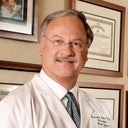Hi. What is the best way to avoid cheek implant infection; having them inserted through the mouth, or the hair line? When will they usually become infected if they WERE dirty at insertion? Could it be years and years after? I want to get these, but I'm worried about the infection risk.
Answers (8)
From board-certified doctors and trusted medical professionals
Dr. Richard H. Tholen, MD, FACS

Dr. Richard H. Tholen, MD, FACS
Board Certified Plastic Surgeon
Answer
Dr. Larry S. Nichter, MD, MS, FACS

Dr. Larry S. Nichter, MD, MS, FACS
Board Certified Plastic Surgeon
Answer
Dr. Elliot M. Heller, MD

Dr. Elliot M. Heller, MD
Board Certified Facial Plastic Surgeon
Answer
Dr. Toby Mayer, MD

Dr. Toby Mayer, MD
Board Certified Facial Plastic Surgeon
Answer
Dr. William Portuese, MD
Dr. William Portuese, MD
Board Certified Facial Plastic Surgeon
Answer
Dr. Robert E. Zaworski, MD (retired)
Dr. Robert E. Zaworski, MD (retired)
Board Certified Plastic Surgeon
Answer
Dr. Francis R. Palmer, III, MD (retired)
Dr. Francis R. Palmer, III, MD (retired)
Board Certified Facial Plastic Surgeon
Answer
More Cheek Implants Questions
See all Cheek Implants Q&AWE SEND PRETTY
EMAILS
What’s trending? Who’s turning heads? Which TikTok myths need busting? We’ve got you. No fluff, no gatekeeping—just real talk. Get our free, unfiltered newsletter.